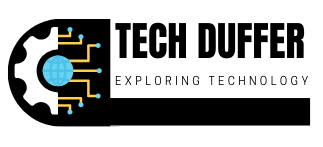Introduction
In the rapidly evolving world of digital marketing, search engines continue to get smarter, and so do the strategies required to stay visible online. One of the most revolutionary shifts in SEO over recent years is the focus on semantics—understanding not just the keywords a user types, but the meaning and intent behind them. Semanticlast.com is at the forefront of this shift, providing tools, insights, and strategies for digital marketers and content creators to optimize content semantically.
This article will delve into the concept of semantic SEO, explore how Semanticlast.com supports this approach, and provide actionable strategies for leveraging semantics in content marketing.
What is Semantic SEO?
Semantic SEO is an advanced optimization technique focusing on the intent and meaning behind search queries rather than relying solely on keyword repetition. While traditional SEO emphasizes keywords as the main indicator of relevance, semantic SEO leverages related concepts, synonyms, and context to create content that aligns with the searcher’s true intent.
Incorporating semantic SEO helps websites rank for a wider variety of related terms, increases content relevance, and provides a better experience for users. Search engines like Google now employ sophisticated AI models to understand user intent, and content optimized semantically is favored in search engine results.
How Semanticlast.com Pioneers in Semantic SEO
Semanticlast.com is a digital platform dedicated to helping content creators and marketers harness the power of semantics. Here’s how it stands out:
- Semantic Analysis Tools
Semanticlast.com offers advanced tools that analyze content semantically, suggesting related keywords, synonyms, and relevant phrases to enhance content quality and relevance. - Comprehensive SEO Reports
The platform provides detailed reports that highlight opportunities to incorporate semantic elements, such as answering frequently asked questions and including related subtopics. - Training and Resources
For those new to semantic SEO, Semanticlast.com offers in-depth guides, tutorials, and webinars to help users understand and implement semantics in their digital strategies. - Competitive Analysis
Semanticlast.com enables marketers to see how competitors are using semantic SEO, providing insights to refine their own approach for improved rankings. - Content Optimization Suggestions
The platform generates actionable suggestions for improving content through semantic keywords, optimizing headings, and enhancing readability, ultimately helping content rank better.
Why is Semantic SEO Essential for 2024?
As search engines grow more adept at understanding language nuances, adopting semantic SEO is becoming essential. In 2024, content that lacks semantic optimization may struggle to rank due to the evolving algorithms that prioritize user experience and content relevancy.
Key Benefits of Semantic SEO:
- Improved Relevance: By focusing on the intent behind searches, semantic SEO makes content more relevant, increasing the likelihood of engaging users.
- Higher Rankings for Related Terms: Semantic optimization allows content to rank for a broad set of keywords, increasing its visibility.
- Enhanced User Experience: Semantic SEO reduces bounce rates by meeting the user’s intent and providing a richer content experience.
- Future-Proofing Against Algorithm Updates: Content that uses semantic SEO is less likely to be impacted by algorithm updates as it aligns with search engines’ goals of providing relevant, high-quality information.
Implementing Semantic SEO with Semanticlast.com
Using Semanticlast.com’s suite of tools can simplify and streamline the process of semantic SEO implementation. Here’s a step-by-step guide to leveraging the platform for effective semantic optimization:
1. Perform a Semantic Analysis of Your Topic
Before creating content, use Semanticlast.com’s analysis tool to research your topic semantically. This tool provides:
- Keyword Clusters: A list of semantically related keywords and phrases that can be included naturally in your content.
- Subtopic Suggestions: Ideas for subtopics that align with user intent, helping create more comprehensive and engaging content.
- Questions People Ask: Insight into commonly asked questions related to the main keyword, which can help you answer queries directly.
2. Structure Your Content Around Semantic Themes
Creating semantically structured content means organizing information based on themes rather than isolated keywords. For example:
- Headings and Subheadings: Use relevant headings that reflect the main theme of each section, aiding search engines in understanding content structure.
- Related Phrases: Scatter related phrases naturally throughout the content, enhancing relevance without keyword stuffing.
Semanticlast.com suggests appropriate headings and phrases, ensuring your content resonates with both users and search engines.
3. Optimize for User Intent
User intent is central to semantic SEO. Semanticlast.com provides insights into user intent for various keywords, enabling you to tailor content accordingly. Here’s how:
- Informational Content: If the intent is informational, focus on delivering detailed answers.
- Navigational Content: If users are searching for a specific site or brand, direct them appropriately.
- Transactional Content: If intent indicates readiness to purchase, include CTAs and product recommendations.
4. Answer Frequently Asked Questions (FAQs)
FAQs are an excellent way to address semantic variations of a primary keyword. With Semanticlast.com, you can access a list of commonly asked questions related to your main topic. By answering these questions, you increase content relevance and can rank in Google’s “People Also Ask” section.
Advanced Semantic SEO Strategies for 2024
For those looking to take their semantic SEO strategy to the next level, consider these advanced techniques:
1. Latent Semantic Indexing (LSI) Keywords
LSI keywords are terms and phrases related to your primary keyword that help Google understand context. These can include synonyms, related topics, and variations. Using Semanticlast.com’s LSI keyword tool can help you identify and incorporate these terms naturally, improving relevancy.
2. Topic Clusters and Pillar Pages
Topic clusters are a way of grouping related content around a central “pillar” page. This structure not only boosts SEO but also enhances user experience by organizing information in a logical flow.
Semanticlast.com can guide you in creating topic clusters by suggesting relevant subtopics and linking strategies to strengthen your content.
3. Optimize for Featured Snippets
Featured snippets are highly valuable for SEO. Content that appears in featured snippets has high visibility and a better chance of attracting clicks. To optimize for featured snippets:
- Answer Questions Directly: Start sections with concise answers.
- Use Lists and Tables: Google often favors lists and tables for snippets.
- Focus on Long-Tail Keywords: These are more likely to have snippet opportunities.
Semanticlast.com offers insights into the types of snippets for which your content can potentially rank, allowing you to tailor your content accordingly.
4. Voice Search Optimization
With the rise of voice-activated devices, optimizing for voice search is essential. Voice queries are usually longer and more conversational, so content should be written in a natural, question-based format. Semanticlast.com provides suggestions for voice-optimized content, helping you align with these trends.
Benefits of Semanticlast.com for Marketers and Businesses
For businesses, Semanticlast.com offers substantial value by helping them improve visibility, user experience, and engagement through semantic SEO. Here are key benefits:
- Higher Search Rankings: By optimizing content semantically, businesses can rank for multiple related keywords and phrases.
- Increased Engagement: Content that addresses user intent effectively is more engaging, which can lead to higher conversions.
- Cost-Effective Marketing: Semantic optimization increases content longevity and relevance, reducing the need for frequent updates or paid ads.
- Enhanced Credibility: High-quality, semantically relevant content enhances brand credibility, positioning businesses as authoritative in their niche.
How Semanticlast.com Compares to Competitors
While several platforms offer tools for SEO, Semanticlast.com stands out by focusing exclusively on semantic SEO. Its comprehensive approach to semantics—including keyword analysis, user intent insights, and optimization suggestions—makes it a preferred choice for those seeking a thorough semantic SEO solution.
Future Trends in Semantic SEO
The future of SEO is intrinsically tied to semantics. As AI models become more sophisticated, semantic SEO will evolve to include elements such as sentiment analysis, content personalization, and real-time search trends. Semanticlast.com is continually innovating, positioning itself as a future-ready platform to help marketers stay ahead of SEO trends.
Conclusion
As search engines prioritize user experience and content relevance, embracing semantic SEO is critical for digital marketers and content creators. Semanticlast.com is an invaluable tool in this journey, offering the tools and insights needed to optimize content semantically and meet the expectations of modern search algorithms. By using Semanticlast.com, businesses can create content that resonates with users, ranks well across various search terms, and ultimately drives growth in the digital landscape.
Whether you’re a business owner, content creator, or digital marketer, adopting semantic SEO strategies through Semanticlast.com can help you stay competitive and future-proof your SEO efforts. In 2024 and beyond, let Semanticlast.com guide you in creating meaningful, impactful content that connects with users and achieves lasting online success.

